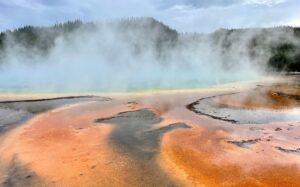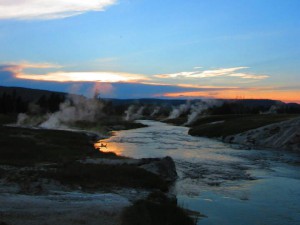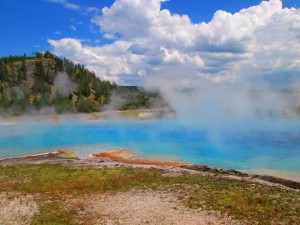
Yellowstone National Park —located partially in Idaho, Montana and Wyoming—puts modern volcanic activity on full display. Near boiling, ominous pools of water in the form of geysers, mud pots, fumaroles (vents that release steam) and hot springs are all present and active in the park and visitors flock to the park to view a handful of thermal features every year during the peak summer visitor season. Coincidentally, this is when a large portion of scientific research also takes place at the park. Combining both the boardwalk paths that are open to all who visit the park and the expansive backcountry, Yellowstone is host to over 10,000 thermal features. These thermal features are fed by superheated water that travels through a complex groundwater system—think the pipes under your kitchen sink—where subsurface water collects gases and chemical compounds en route to the surface. As a result, near-boiling water that bubbles through to the surface is often rife with chemicals like sulfur, iron or magnesium. Early scientists thought of hot springs as uninhabitable, but as it turns out, these conditions are just the right environment for thermophilic (or “heat-loving”) bacteria to thrive.
Continue reading “The Microbial Secrets that Lie within Yellowstone National Park Hot Springs”

